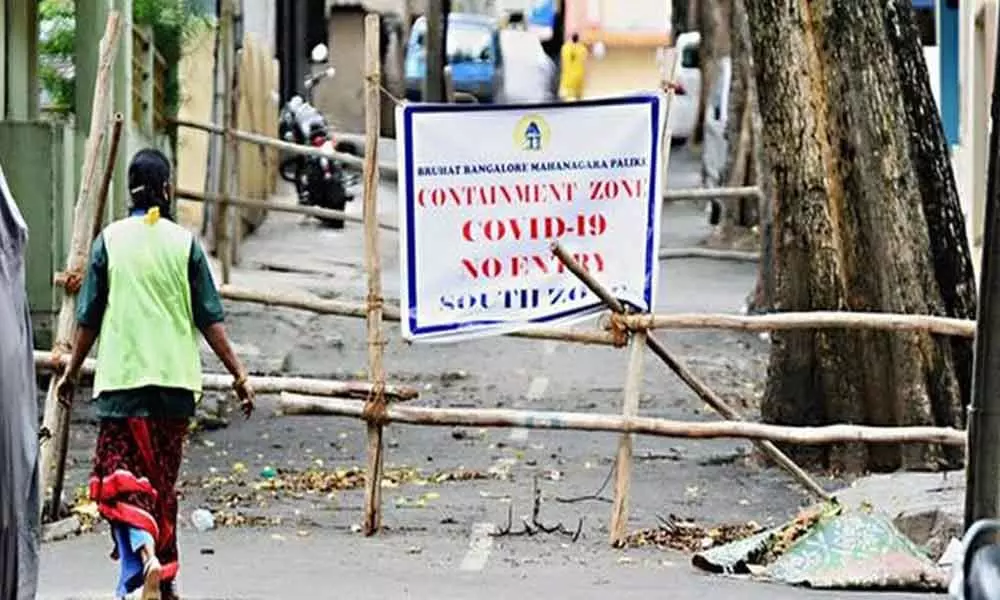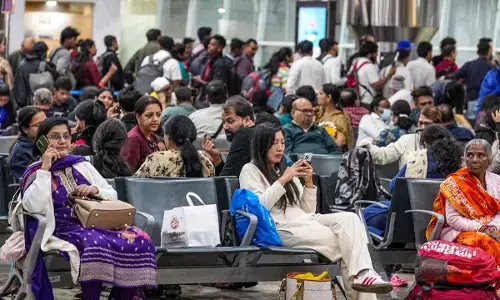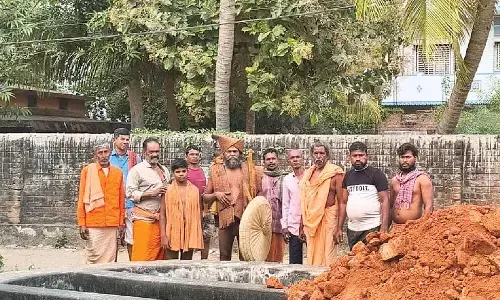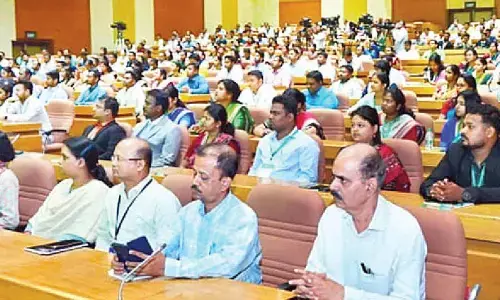Karnataka struggling to manage increasing containment zones

Karnataka struggling to manage increasing containment zones
Bengaluru is one of the worst-affected metro cities in India with nearly 97,000 confirmed cases, of which more than 1,500 are deaths and over 33,000 are active cases.
Bengaluru: Bengaluru is one of the worst-affected metro cities in India with nearly 97,000 confirmed cases, of which more than 1,500 are deaths and over 33,000 are active cases. Even as Bengaluru is close to the grim milestone of one lakh mark of Covid-19 cases, the Karnataka Department of Health and Family Welfare on Thursday has revised guidelines that define containment zones and buffer zones. The Bruhat Bengaluru Mahanagara Palike (BBMP) will now not be required to barricade the streets where individual cases of Covid-19 cases
However, the government has come up with new Standard Operating Procedures (SOPs). The BBMP will not barricade the entire lane if any individual case is reported. Instead, the BBMP will only paste a notice on the door of the house of the Covid positives. The BBMP will inform the Resident Welfare Associations (RWA) for identification of contacts and their testing.
As per the new guidelines, if a Covid-19 patient lives in an individual house, only the building in which the person resides will be a containment zone. Earlier, the entire street where an individual house is located was a containment zone and both ends of the streets were to be barricaded.
In a slum, where a resident is tested positive, the entire street in which the person resides was a containment zone.
In an apartment building, if there are individual cases only the floor in which the patient resides will be considered a containment zone. Earlier, the floor in which the patient resides along with the floors above and below were considered containment zones. If a resident of a slum tests positive, the entire street in which the person resides will now be a containment zone.
In an apartment complex, this would be the floor which has the residence of the Covid-positive person. For an independent house or villa - it would just be the individual house or villa," the notification reads.
"For rural areas, it would be the complete habitation of the Covid-positive person or a small contiguous area as appropriate," the BBMP added.
Additional Chief secretary to the government Jawaid Akhtar has stated that the house to house surveillance should be conducted on a daily basis in the containment zone while in the buffer zone it should be twice in a week to avoid the spread of infection. "If no new Covid-19 case is reported for at least 14 days after the last case was reported and all the contacts of the confirmed case have been followed up for 14 days, the containment zone will be lifted," he said.
New containment norm; breakup of cases across BBMP zones
• In case of individuals Covid infections in an apartment complex, the entire floor will be treated as a containment zone
• In case of an independent house or villa, the entire house will be treated as a containment zone.
• For a slum area, the entire street which has the residence of the Covid positive person
• In rural areas, the complete habitation where the Covid positive person resides or a small contiguous area as deemed appropriate
The Karnataka health department stated that it is finding it difficult to conduct surveillance activities and perimetre control around the containment zones. "There are a large number of cases reported in houses and apartments which are closely located. This has led to too many containment zones, thus making it difficult for authorities to conduct surveillance activities and ensure perimetre control
- Jawaid Akhtar |
Additional Chief Secretary


















